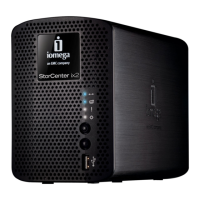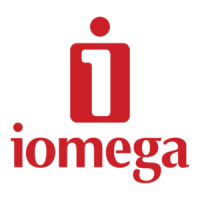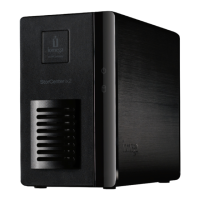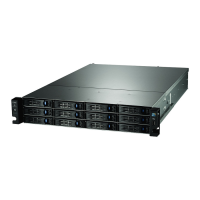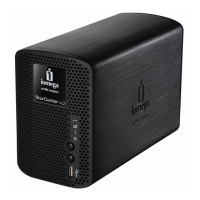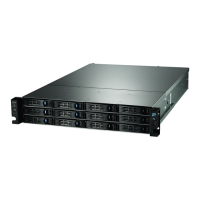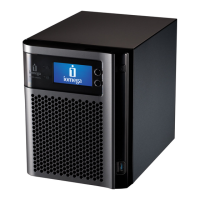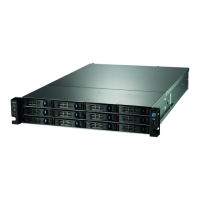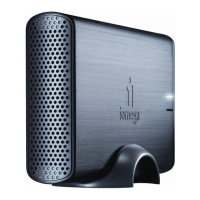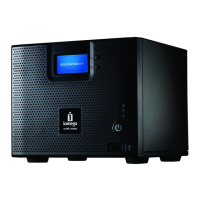
Do you have a question about the Iomega Ix4-200d - StorCenter NAS Server and is the answer not in the manual?
| USB Ports | 2 x USB 2.0 |
|---|---|
| Processor | Marvell 6281 |
| Number of Bays | 4 |
| Max Internal Capacity | 16 TB |
| Operating System | EMC LifeLine |
| Storage Capacity | Up to 16TB |
| Drive Type | 3.5" SATA II |
| RAID Levels | RAID 0, 1, 5, 10, and JBOD |
| Network Interface | 2 x Gigabit Ethernet |
| Hard Drives Included | Varies by model |
| Protocols | CIFS/SMB/Rally (Microsoft), NFS (Linux/UNIX), AFP/Bonjour (Apple), FTP, HTTP, HTTPS, SNMP |
| Power Supply | External AC 100-240V, 50-60Hz |
Describes the components on the front of the device.
Describes the components on the rear of the device.
Details the default IP address, device name, and shares.
Lists the items included in the product package.
Provides step-by-step instructions for initial device setup.
Outlines FCC rules and compliance for the device.
States compliance with Canadian Interference-Causing Equipment Regulations.
Confirms product conformity with European directives and standards.
Provides information on proper disposal of the device.
Explains how to enable the DMZ feature for network configuration.
Details port forwarding steps for dual NAT network setups.
Instructions for configuring a secondary router in bridging mode.
Guidance on enabling transparent bridging on the primary router.
Displays share name and usage, with content viewing options.
Lists users with access and default permissions.
Links to configuration options for specific active folder types.
Guides on creating new shares and altering existing ones.
Details how to modify share names and media sharing settings.
Explains how to set user access rights for shares.
Steps to enable and configure NFS access rules for shares.
How to associate shares with specific features like email or photo resizing.
Configures disk write caching to optimize performance.
Sets global management settings for drives, including RAID and protection.
Displays information on the status and layout of the device's drives.
Provides steps to safely disconnect external storage devices.
Steps to configure and enable iSCSI drives for network access.
Guides on connecting to iSCSI drives via management software.
How to view a list of client computers connected to iSCSI drives.
Instructions for creating and naming new iSCSI drives.
How to set user permissions for iSCSI drives.
Steps to enable Bluetooth and configure security and destination shares.
Guides on enabling the rsync server and setting up credentials.
Steps to enable SNMP and configure community settings.
Defines key terms related to Windows Distributed File System.
Instructions for setting up DFS roots and links.
Steps to enable WebDAV for HTTP and HTTPS access.
Guidance on router configuration for remote WebDAV access.
Configures the default destination share for automatic file copies.
Steps to enable and configure torrent download settings.
How to pause, resume, or delete torrent jobs.
Details required port information for router configuration.
Describes using the QuikTransfer button to initiate copy jobs.
Steps for creating and editing copy jobs, including source and destination settings.
Configuration options for the source location of copy jobs.
Configuration options for the destination location of copy jobs.
How to schedule copy jobs to run automatically.
Steps to enable and configure Mozy account details.
How to choose shares and folders for Mozy backup.
Procedures for restoring files from Mozy backup.
How to enable Time Machine backup for Mac computers.
How to change the destination share for Time Machine backups.
Steps to manually create backup folders for Macs.
How to initiate a Time Machine backup.
How to delete Mac backup shares.
Steps to enable and configure the Amazon S3 online storage service.
How files are automatically backed up to Amazon S3.
Procedures for restoring files from Amazon S3.
Defines key terms for understanding the Personal Cloud feature.
Instructions for adding and enabling members to the Personal Cloud.
How to resend invitations to members to join the Personal Cloud.
Steps for disconnecting from or deleting a Personal Cloud.
How to disconnect members from the Personal Cloud.
How to permanently remove members from the Personal Cloud.
How to synchronize the device's time with an internet server.
How to manually set the device's date and time.
Configures the idle time before drives automatically power down.
Adjusts the brightness of the device's indicator lights.
Step-by-step guide for manually installing software updates.
How to remove a slideshow from the home page configuration.
Instructions for backing up system configuration settings.
Procedures for restoring previously saved configuration settings.
How to bond multiple network interface cards for increased bandwidth.
Steps to enable jumbo frames for network interface cards.
Information on adding network interface cards to Virtual LANs.
Steps for enabling remote access using the basic option.
Steps for enabling remote access using the premium option.
How the media server scans for content in enabled folders.
How to combine media content from multiple DLNA servers.
How to enable internet access for the media server.
Specific steps to enable internet access via the Media Server page.
Overview of features like Name, Space, Model, and Action controls.
Steps to manually add a video camera if not automatically discovered.
How to configure how long recorded videos are saved.
How to schedule video recording times and days.
Graphical representation of space used by shares.
Commands for blinking lights, restarting, and shutting down the device.
Displays hardware, software, and status details of the device.
Explains different types of status messages (Information, Warning, Error).
How to download the full event log file.
How to change the storage device name and workgroup name.
Steps to incorporate the device into an Active Directory domain.
How to enable trusted domain access for users and groups.
Steps to disable security features and the consequences.
Explains user login requirements when security is enabled.
Guides on adding new users and modifying existing user details.
How to edit username, password, and descriptive name for users.
How to set share access permissions for individual users.
How to set storage space quotas for users.
Steps to create new groups and edit existing ones.
How to remove a user from a specific group.
How to set share access permissions for groups.
How to import users and groups from an Active Directory server.
How to synchronize user and group data with the AD controller.
How to set share access permissions for AD users and groups.
How to set storage space quotas for AD users.
